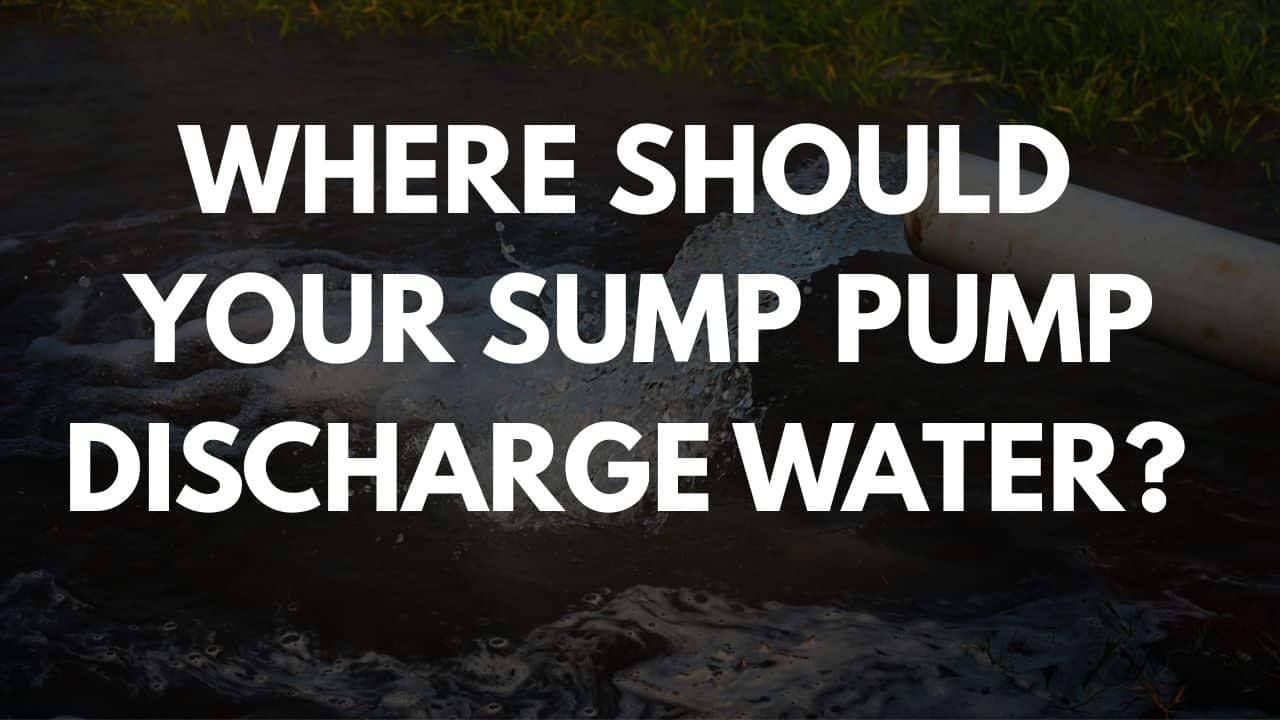One of the most overlooked parts of a sump pump system is where the water actually ends up. It might not seem like a big deal, but where your sump pump discharges that water can have serious consequences—for your basement, your neighbors, your foundation, and even local laws.
As a handyman who’s worked on hundreds of drainage setups, I’ve seen both clever solutions and costly mistakes. Let’s break down what works, what doesn’t, and how to get the most out of your system.
🌊 The Basics: What a Sump Pump Is Supposed to Do
Your sump pump collects excess groundwater or rain runoff that builds up in a sump pit, usually located in the lowest part of your basement or crawl space. When the water reaches a certain level, the pump kicks on and sends it out of your home through a discharge line.
Where that line goes is what we’re talking about today—and doing it right matters.
✅ Ideal Sump Pump Discharge Locations
1. Far from Your Foundation (At Least 10 Feet)
The golden rule is to keep the water at least 10 feet away from your foundation. Anything closer, and you risk that water cycling right back into your sump pit.
Pro tip: Use a corrugated extension hose or underground piping to carry water far enough away.
2. Downhill or Into a Drainage Swale
Water flows downhill. Aim your discharge line where gravity can help it move away from your home naturally. Bonus points if you can feed it into a shallow swale (a dip in the yard that channels water) or a dry creek bed.
3. Rain Garden or Dry Well
These eco-friendly options collect runoff and let it soak into the soil gradually. It prevents pooling and reduces erosion. Just make sure they’re built to handle the volume your pump moves.
4. City-Approved Storm Drain (Where Legal)
Some municipalities allow you to tie into storm drains, but never into a sanitary sewer. Always check your local building codes first.
5. French Drain Systems
A buried gravel trench that redirects water across your property can also be a great solution if done correctly.
❌ What to Avoid at All Costs
1. Discharging Too Close to the House
This is the #1 mistake I see. If your water ends up back near your basement wall, your sump pump will be running in circles—and eventually wear out.
2. Dumping Water Toward a Neighbor’s Property
It might seem harmless, but it can cause real damage. You could be held liable if your runoff floods their basement, damages landscaping, or creates ice patches in winter.
3. Connecting to the Sewer Line
This is illegal in most areas and can result in huge fines. It also overloads your city’s wastewater system, especially during storms.
4. Letting Water Pool in Your Yard
If you see puddles forming every time it rains, your current setup isn’t working. This can attract pests, create muddy messes, and weaken soil structure over time.
🔍 Signs Your Discharge Setup Needs an Upgrade
- Your basement smells musty or is humid despite a working pump
- You see erosion near your discharge area
- Water is leaking out of joints or freezing in the winter
- Your sump pump cycles frequently even during dry spells
- Neighbors complain about your runoff
🤝 Pro Tips From the Job Site
- Add a splash block or diffuser where water exits to prevent erosion.
- Use rigid PVC for underground runs; it lasts longer than corrugated pipe.
- Drill a weep hole near the pump outlet to prevent airlocks.
- Add a freeze guard or insulated section if your discharge line runs above ground in cold climates.
- Slope the line slightly downhill at about a 1% grade to keep water moving.
🤔 FAQs: Sump Pump Discharge Edition
Q: Can I just run the discharge hose out into my yard?
A: You can, but only if the water drains well and doesn’t cause puddles or neighbor issues. Extend it at least 10 feet from the house.
Q: What if the discharge freezes in winter?
A: Install a freeze guard or run the line below the frost line. Make sure it slopes to prevent trapped water.
Q: Can I pump into the street?
A: Maybe. Some cities allow it, others don’t. Check local ordinances.
Q: Should I bury the discharge line?
A: If you want a clean look and long-term function, yes. Just make sure it slopes away and ends in a safe zone.
Q: Why is my pump running constantly even though it rained days ago?
A: Your discharge line might be clogged, frozen, or feeding water back toward the foundation.
Where your sump pump sends water is just as important as how well the pump itself works. Done right, it keeps your basement dry and your system efficient. Done wrong, you’re asking for mold, pump burnout, and unhappy neighbors.
Need help installing a better discharge line or building a long-term drainage solution? I’m just a call away.

